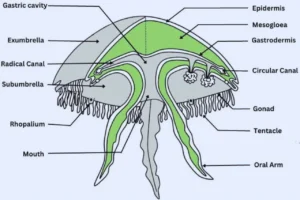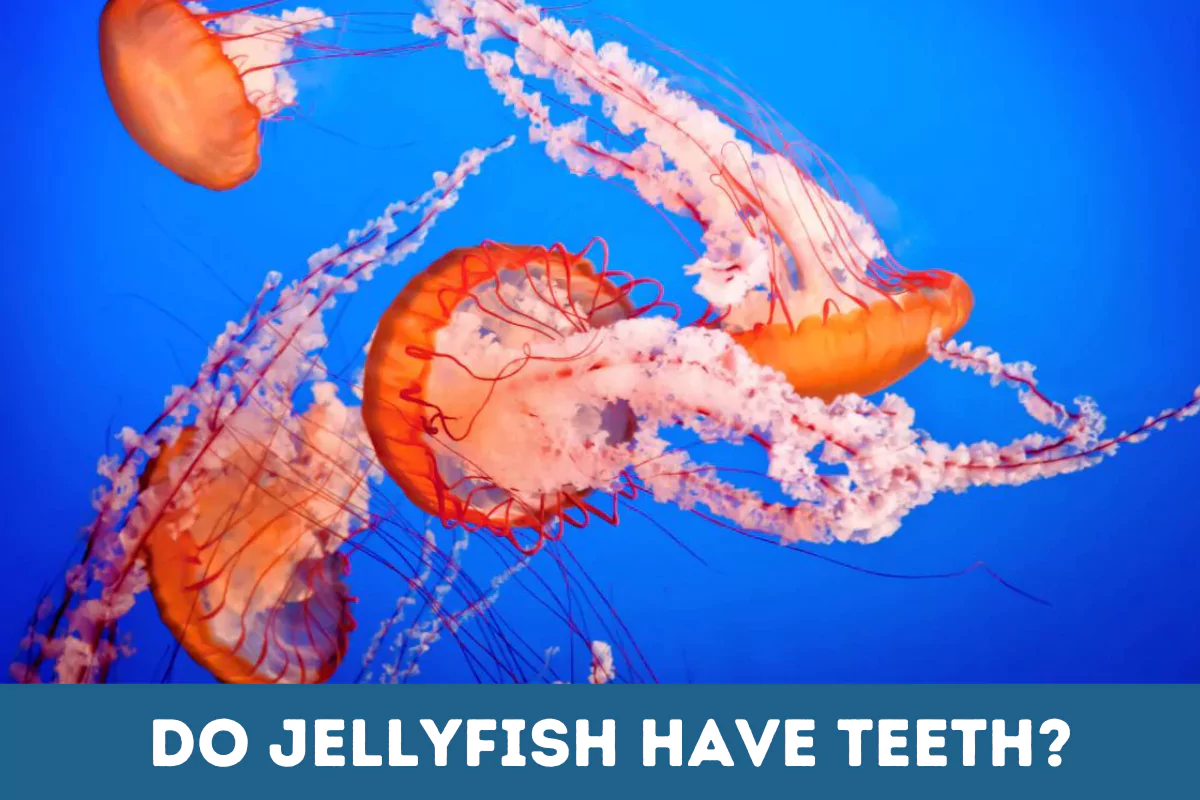When we think of jellyfish, the image that usually comes to mind is a graceful and serene creature gently gliding through the ocean. But have you ever wondered what lies beneath their soft and gelatinous bodies? Do these fascinating creatures possess teeth, or are they simply toothless wonders of the sea?
Join us as we delve into the mysterious world of jellyfish dentistry to unravel this enigma and discover if there’s more to these captivating creatures than meets the eye. So, grab your scuba gear and get ready for an underwater exploration like no other!
Do Jellyfish Have Teeth?
Jellyfish do not have teeth as they don’t have a skeleton system. But Beroid Comb Jellyfish (a species of jellyfish) possess tiny finger-like projections or sticky cells called Macrocillia that help them catch prey.
Jellyfish are the oldest multicellular animals on the planet, and scientists have discovered soft fossil snapshots of jellyfish which left imprints on rocks that are believed to be around 700 million years old. That makes these gelatin creatures even older than dinosaurs!
Being ancient creatures and one of the most primitive animals on the earth, jellyfish have experienced ultimate evolution as they outlived all the mass extinction events of the planet. Hence, these fish only possess simple organs.
Which Species Of Jellyfish Have Teeth?
Jellyfish are one of the fascinating wonders of evolution and are known to have only simple organs. They do not have teeth. But one species, named Beroid Comb jellyfish, possess teeth-like structures in the oral openings of their bodies.
These tooth-like structures called “Macrocillia” help jellyfish to grab, pierce, grind, and direct their prey toward the gastrovascular cavity. In reality, these are not actual teeth but hair-like projections that provide the function of teeth.

Jellyfish mainly feed on small fish and plants, shrimp, crustaceans, and zooplankton. And these Macrocillia help them to enhance the predation abilities of jellyfish.
Also Read: Do Jellyfish Have Eyes?
Do Box Jellyfish Have Teeth Or A Mouth?
Box jellyfish do not have teeth or even a mouth. They only possess a single opening for their digestive cavity, which is used for feeding and excretion.
Box jellyfish only feed on small fish and animals, so they do not need any specialized teeth for eating.
Box jellyfish’s digestive cavity is primarily divided into 4 gastric chambers. The movement of water and tentacles causes the prey to be transported throughout these gastric pouches. And inside the stomach of the box jellyfish, there are stinging cells and glandular cells that aid in the digestion process.
Do Golden Jellyfish Have Teeth?
Golden jellyfish, being soft-bodied Cnydarians, also don’t have teeth as they do not possess a skeleton system. They are adapted to catch their prey and eat them without having the need for teeth.
Golden jellyfish are known to have an interesting relationship with algae named zooxanthellae as they provide the required nutrients to the jellyfish while carrying out its photosynthetic process.
Also Read: Do Crabs Have Teeth?
Can A Jellyfish Bite?
Jellyfish are notorious for their stinging abilities, and their sting can cause burning and prickling sensations in the skin. Although the burning will go away after a while, in most cases, it can inflict extreme skin burning, convulsions, and even death sometimes.

Jellyfish tentacles are armed with thousands of tiny stinging cells known as nematocysts, which are filled with venomous substances. Once the tentacles make contact or even graze against something, the nematocysts spring into action, instantly releasing the venom to paralyze the prey.
If you are stung by a jellyfish, get it treated even if the symptoms look minor because, on rare occasions, it can even lead to death.
What To Do When You Are Stung By A Jellyfish?
Follow these simple instructions when you are stung by a jellyfish:
- Rinse the affected area with hot water to remove any stingers
- Remove any visible stingers from your skin immediately (if still left)
- Apply rubbing alcohol to prevent further stinging
- Applying pain-relieving ointment can also reduce swelling and pain
- Consider taking oral medication for pain relief (if it’s severe)
- Avoid scratching or rubbing the affected area
Note: If your symptoms are severe and persist even after following the instructions, promptly visit your nearest doctor.
Wrap Up:
Jellyfish have very basic body structures and anatomy, so they do not have any teeth.
Even though they have no bones, brains, teeth, blood, or fins — don’t let their simple anatomy fool you. In their ecosystem, jellyfish are very efficient predators and can paralyze their prey with their stings.








